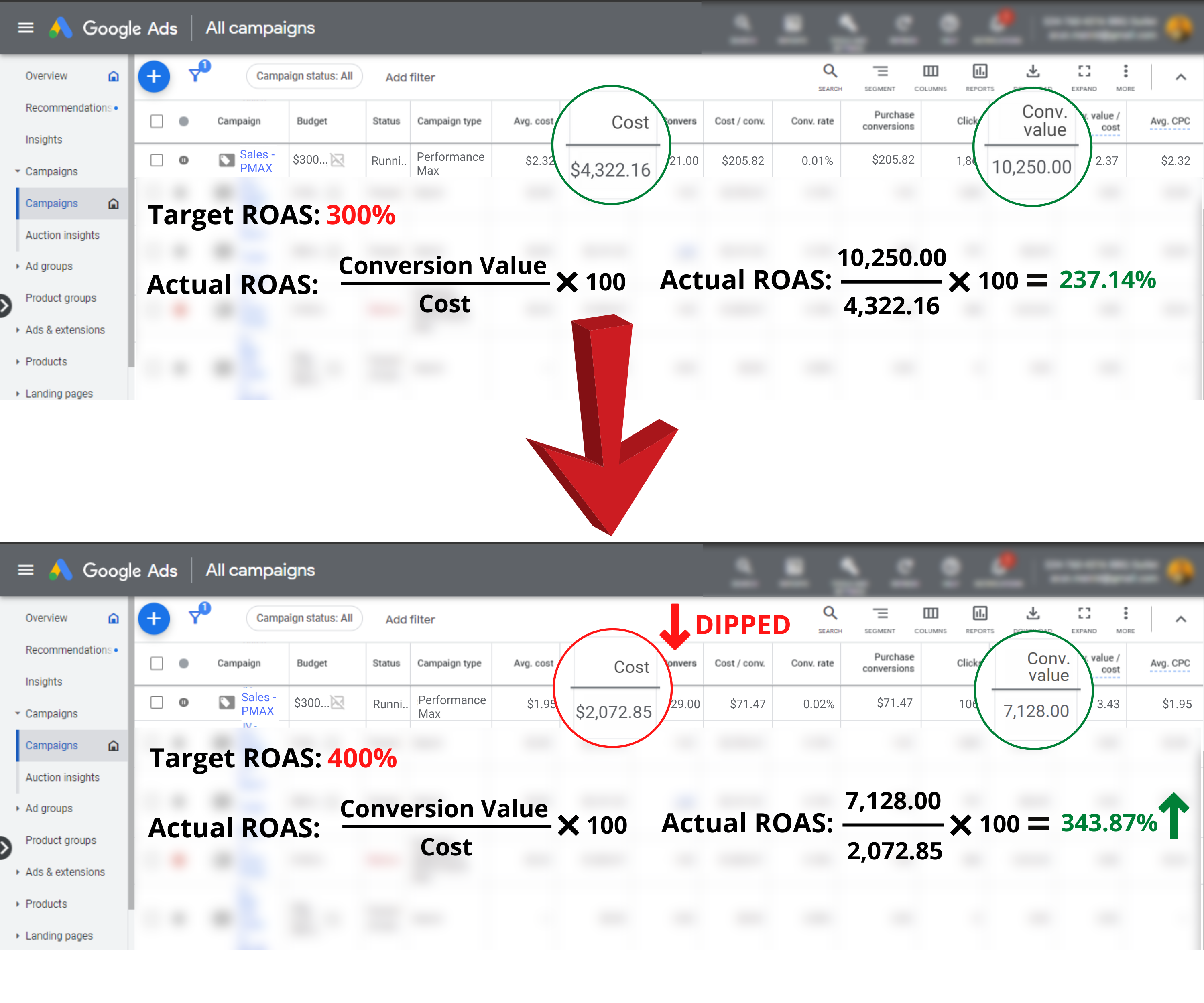Why Does My Spend Dip When I Use Target ROAS?

Have you ever wondered why your spend changes in Google Ads when you use target ROAS? Whether you’ve seen a drop in how much your ads are costing or simply want to know the ins and outs of using more targeted ads to drive sales, we’ve got you covered.(our article should be very targeted, does not need any generic start)
ROAS – return on ad spend – refers to the amount of money you make in sales from your online ads, and we’re going to take you through a quick guide so you understand how using ROAS control can alter your campaign activity – with the end goal of finding your ad spend ‘sweet spot’ to scale your business the right way.
What is ROAS?
Return on ad spend is an important metric to monitor while considering your online marketing strategy with paid ads.
Maximizing your ROAS is an excellent way to increase your conversions, grow your business online and make all-important sales – which means more money for your company
What is a healthy ROAS?
A healthy ROAS varies depending on a number of factors, including the products you’re selling, the industry you operate in and your average cost-per-click. The average ratio across the board when it comes to ROAS is 2:1 – a $2 return for every $1 spent on ads
Taking the multiple factors into account, most companies want to aim for a 4:1 ratio as a successful ROAS – and there’s nothing wrong with aiming high!
How does ROAS change my campaign activity?
Let’s dive right in and discuss how ROAS changes your campaign activity depending on what you target in your ad campaigns.
Let’s say you have a ROAS of 150%, but you’re ambitious and want to double that figure to 300% ROAS. By implementing the target using Google Ads, you’re asking the Google algorithm to give you 300% ROAS on your campaign
The best thing about Google? They give you exactly what you want. If you ask for 300%, it will do everything it can in order to deliver – and it usually does.
But getting what you want from Google comes at a price – and in the case of ROAS, that price is volume. The short and simple explanation is this: if you adjust your ads to implement an increased targeted ROAS, Google will only target your potential customers at the very end of their customer lifecycle
This means that all your potential customers at earlier stages in your sales funnel will largely be ignored because the ads are not going to create an immediate return on your investment.
Say, for example, you’re working on 10,000 customers at all stages of their customer journey, but then you want to increase your ROAS, Google may only target 1,000 of those customers and leave the other 9,000 out. This is because Google will spend everything it can on converting paying customers, not those who you’re targeting for awareness.
While this means that you may see a decline in how much you spend – for example, your $10,000 maximum weekly might only be costing you $6,000 – you may still be missing out on the optimum level of revenue by cutting out important target customers for the future
What happens when you add ad spend?
If you tell Google to focus on a higher percentage of ROAS on your highest-selling products, it will do it – but you have to have the data in place in the first instance in order to maximize that feature of Google’s algorithm
If you opt to put more money into your Google Ad spend, Google will use that money in an optimum way according to your criteria – so if you want a higher ROAS, Google will use the extra cash to maximize the profits of your best products
That being said, if you want Google to use that extra cash for a percentage that is too high – across all your products – you’re going to lose that extra money because Google won’t have the data to push all your products into converting.
[actually, it would not use any extra money, if you increase tROAS, then spend will actually go down even if you provide a higher budget]
Find your balance
It’s absolutely vital to use your Google Ad campaigns over a longer period of time in order to maximize the data you have for your products. This way, using data across multiple months, Google can respond better to your higher ROAS requests and ultimately make you more money.
Doing this, you have to be careful not to overspend and find your tipping point, where you’re maximizing your profits but reach a place in your campaign where you can start bringing your ad spend down, increasing your margins and growing your business from there
Do You Have Queries?
